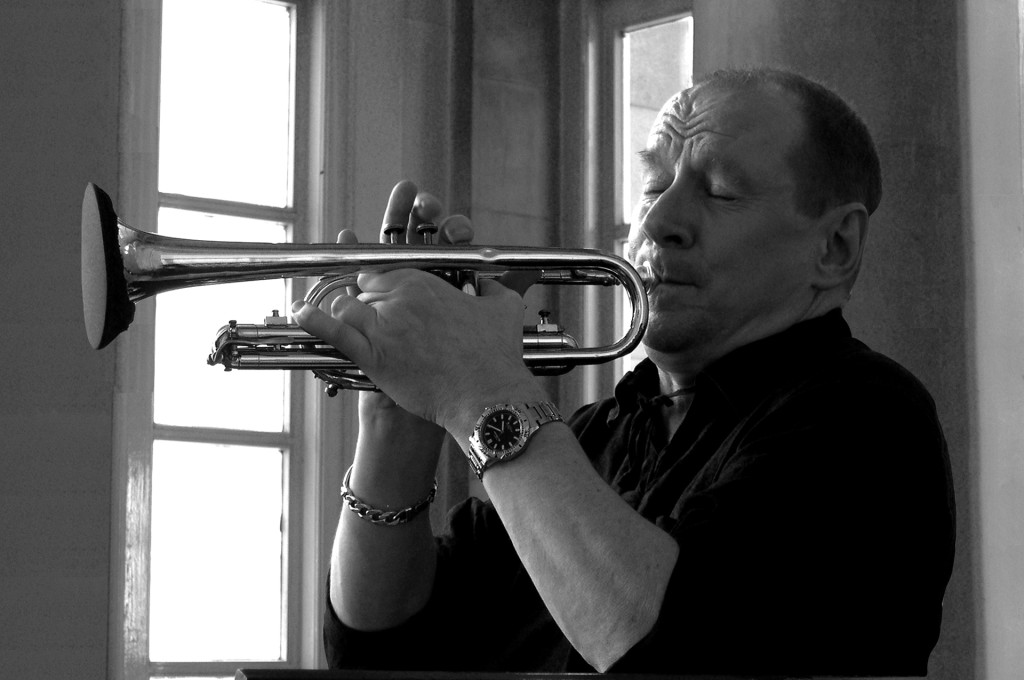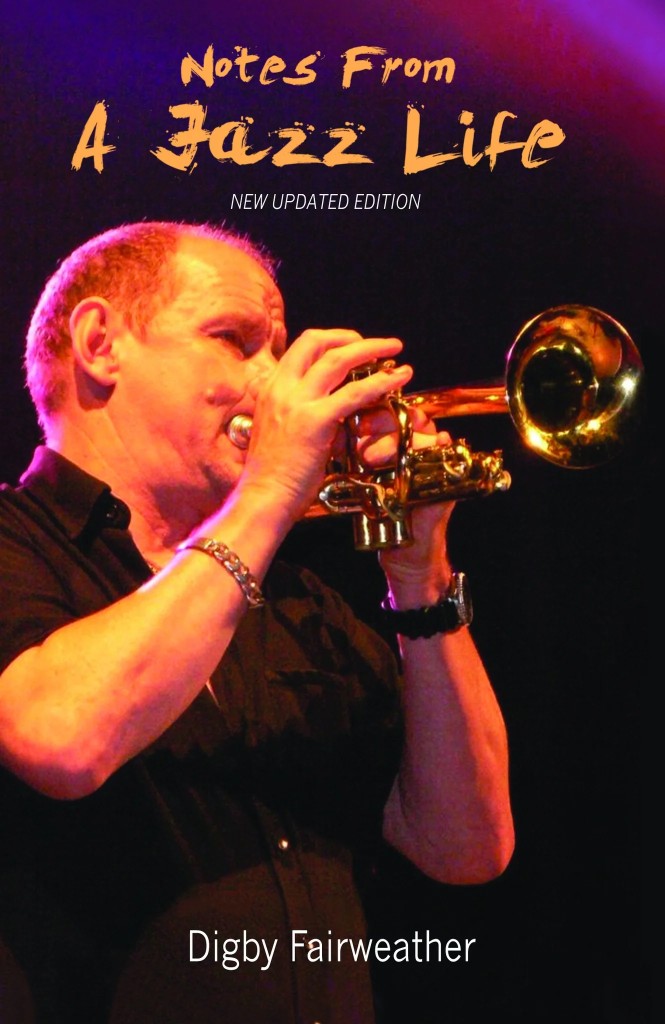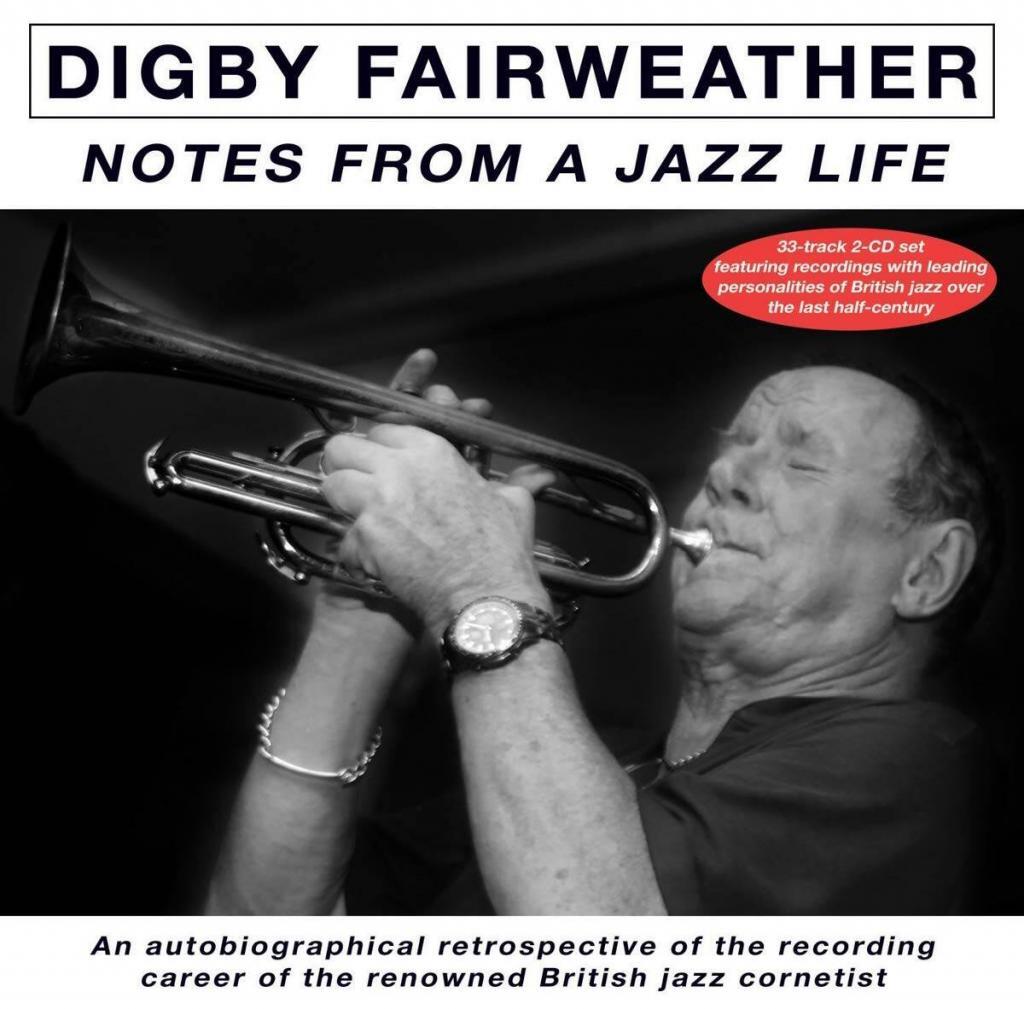Very, very occasionally I receive fan mail from a reader who has enjoyed one of my articles. Often it’s about one of my “forgotten ladies” pieces—those deep dives into the lives of jazzwomen whose pioneering contributions have been all but neglected by the history books (often leaning heavily on the research of musicologist Sherrie Tucker). I’m always grateful to receive these emails, thanking me for shining a light on the reader’s favorite lesser-known artist—or else introducing them to someone they hadn’t come across before.
But I was especially excited to get a message about my Max Jones retrospective (ST of February 2023), in which I summarized some of the late British jazz writer’s most interesting interviews with the stars of yesteryear. Not because I was particularly proud of that piece, but because the very complimentary message came from one of Max’s close friends—someone I had long admired both as a jazz musician and a jazz journalist: none other than British trad revival icon, prolific jazz biographer, and BBC broadcasting veteran Digby Fairweather.
If you aren’t hip to Dig (which is how he signs off his emails), you really should be. The cornetist participated in a post-war trad boom which saw Dixieland storm the British pop charts. While the Beatles were busy breaking the US, bandleaders like Acker Bilk, Chris Barber, and Kenny Ball saw NOLA-inspired renditions of “Midnight in Moscow,” “White Cliffs of Dover,” and “Stars and Stripes Forever” reach the top ten. This was no flash in the pan: in the multi-decade careers which followed Ball scored 12 UK top 40s, Bilk managed ten and Barber three. Keep in mind that these are the pop charts. In fact, Bilk’s “Stranger on the Shore” was the biggest-selling British single of 1962, period.

Dig joined in a bit later, but his contribution has been no less substantial. Since 1971 he has led Digby’s Half Dozen, recording 18 albums between 1979 and 2012, and touring for a solid half-century. Dig’s raft of accolades include BBC Jazz Society Musician of the Year (1979), plus lifetime achievement awards for services to jazz from the Worshipful Company of Musicians (2013) and the British Jazz Awards (2015). He even has the Freedom of the City of London, and a Special Award from the All Party Political Jazz Group of the Houses of Commons and Lords (although he isn’t sure why). The Half Dozen’s appeal has also been spectacularly long lived: they were named top small group by the British Jazz Awards every year between 2005 and 2015, with the sole exception of 2007.
On top of all this, Dig has had a very successful career as a biographer and broadcaster. The former librarian has also helped establish two UK jazz archives, becoming custodian to artifacts including the correspondence, music, and even instruments of trad revival legends like Humphrey Lyttelton. Dig’s remarkable career is recorded in the autobiography Notes from a Jazz Life (2002)—and he took the time to email me: someone with little more right to call himself a jazz journalist than the averagely well-informed ST reader with a Twitter account. To say I felt privileged is an understatement.
Imagine how humbled I was, then, when Dig agreed to be interviewed. I made the very most of it, and he was happy to oblige: while I try to keep most chats to about an hour, Dig and I were on the phone for almost two. Besides a fascinating insight into the British trad revival of the 1960s—and great anecdotes about some of my favorite bandleaders—I came away with an invitation to tour the National Jazz Archive and Jazz Centre UK. You can look out for that field report in a future issue of this very magazine.

Born in 1946, Dig’s own jazz journey began in the early 1950s, growing up in the village of Paglesham, Essex. “This was before rock ’n’ roll reached Britain,” he told me. “So I would listen to the BBC Light Programme and there was a band led by a clarinet player called Sid Philips. He came from the prewar period, when he played for [Benjamin] Ambrose’s band. He survived the war and had an enormously successful Dixieland band.” (The debate as to whether we should still use the D-word hasn’t really happened this side of the Atlantic, and it’s still the term used for New Orleans-style jazz—especially amongst older players and writers.)
Dig also became a fan of homegrown big bands led by John Dankworth and Ted Heath, as well as being exposed to influences from across the Atlantic. (The BBC Light Programme was instrumental in bringing US music to Britain.) “A lot of it was popular songs, including some American standards and a little bit of jazz,” Dig recalled. “Later there were shows like Jazz Club and Just Jazz.” By the age of six, he was obsessed with the New Orleans sound and by eight years old he had taken up the drums.
Like my own musical journey, which kicked off on my aunty’s kitchen floor, his career began with banging pots and pans. “I didn’t have a proper kit,” Dig explained, “so I made up my own and would whack away to the records of Joe Daniels and His Hot Shots, or Scott Woods’ Six Swingers—two very good British bands from the 1930s and 1940s.” At school he took up both the violin and clarinet, but it was brass which really appealed. “When I was about 12 I got an E flat alto horn,” he said, “which was very close to what I really wanted: a trumpet.”
Dig’s first trumpet came from a neighbor, soon becoming his most prized possession. “There were not more than about three hundred people living in Paglesham then,” he recalled, “but, quite extraordinarily, we had a four-piece jazz band. As soon as I heard them play at the village show, I was set for life: I became a complete jazz addict.” The four lads “played all kinds, from Dixieland to big band swing,” Dig remembered. His own record collection was also growing apace: Bobby Hackett, Jack Teagarden, Wingy Manone and Mugsy Spanier became firm favorites. “I found a 78 of Louis Armstrong playing ‘Back o’ Town Blues’,” he told me, “and within 12 bars I thought, ‘That’s it—that’s exactly what jazz should sound like.’ I’ve followed that path ever since, while keeping an ear open to everything else.”
Having ditched the drums and violin, Dig stuck with the clarinet and alto sax until the age of 19, when he forsook all other instruments for the horn. But were it not for the groundwork of Ball, Barber and Bilk alongside Lyttleton, Monty Sunshine, George Melly, George Webb, and others—many of whom he later worked with—Dig’s jazz ambitions might have been forever frustrated. The 1960s was the decade of pop, but these revival pioneers had established a British beachhead onto which Digby’s Half Dozen could deploy, the otherwise unstoppable tide of Merseybeat held at bay.

Still, as Dig recalls, it was a close thing. “In 1963 I sincerely considered that jazz might be done,” he said. “I had a good friend called Hugh Rainey who played in Bob Wallace’s Storyville Jazzmen, which was very popular in the 1950s. In 1963 they went into the London Palladium, opening for comedians like Tony Hancock. They went in in February and came out in November. When they asked their agent where next, he said, ‘Nowhere’—the Beatles had released Please Please Me and the whole world had turned over to beat music. Every member of Bob’s band either went abroad or became a music teacher.”
But the second line held, bolstered by smash hits like Ball’s “I Love You Samantha,” Barber’s “Petite Fleur,” and Bilk’s “Summer Set.” Dig thus found plenty of work as a sideman in bands run by Hugh Rainey, David Ley, Eric Silk, Keith Nichols, Ron Russell, and Lennie Hastings. In 1977 he was able to give up his day job as a librarian and devote himself to playing old-time jazz full time with his Half Dozen. “Fortunately, trad had gained a huge following in Britain by then, thanks to Kenny, Chris and Acker,” he said. “Later on I’d get to know them very well. Nat Gonella also became a very close friend and we toured and recorded together a lot.”
Just as it had been half a century earlier, trad jazz was the music of the counterculture. “These guys were all young, handsome rebels,” said Dig. “Not quite like the Beatles, but they were all anti-establishment, very musical and for a while they dominated the charts.” Dig wrote The Rough Guide to Jazz with Ball in 2000. “Kenny had been tutored by Sid Philips, who was my first inspiration,” he recalled, “and he worked very hard indeed. Apart from being a phenomenal trumpet player he worked very hard to find novelty tunes and to get hits. Even after the Beatles arrived he was very comfortably off. He even played at Prince Charles’s [first] wedding. My most feared job was replacing Kenny in the touring Best of British Jazz package for six years after he died in 1999.”
I’m a huge fan of British trad, particularly Kenny Ball: his jazz reimaginings of Broadway tunes (“March of the Siamese Children”), exotic pop songs (“Sukiyaki”), movie soundtracks (“55 Days at Peking”), and classical masterpieces (Mozart’s “Piano Sonata in A, K331: III”—or “Turkish Rondo,” recorded by Ball as “Rondo”) are superbly swinging, eminently danceable additions to the jazz canon. This was officially recognized as early as 1963, when Ball was made an honorary citizen of New Orleans. I asked Dig what he considered to be the British contribution—and whether a distinctly British trad sound developed from it.

He took a moment to think about this. “The British Songbook is very honorable,” he said, naming some of the Ball tunes above. “I don’t know whether there’s a blanket British style, though. [Fellow bandleader and broadcaster] Steve Race said there’s no such thing as British jazz, only American jazz with a British accent. I think all jazz is a matter of accents: Dizzy Gillespie had an accent, so did Kenny Wheeler, Tony Scott, Acker Bilk—he had a definite accent, and he’s one of the greatest clarinetists in the world. So I think music has an accent completely independent of nationality.”
Reflecting on his own sound, Dig insisted that he really couldn’t describe it as quintessentially British. “I remember what Buck Clayton once said: ‘You steal a little bit from everybody and what comes out is yourself,’” he told me. “In my time, I took a little from everybody—Freddie Mandel, Ruby Braff, Harry James, or whoever—and hopefully it came out sounding a bit like me. If you listen to 25 of my records you’d say, ‘That’s probably Digby,’ but you could say the same about everyone, wherever they come from.”
Jazz is still alive and well in the UK, although most contemporary players and fans have rejected the old school. The famous Tomorrow’s Warriors program keeps turning out mainstream stars like Nubya Garcia, Moses Boyd, and Yazz Ahmed—if you consider any BBC airplay the marker of “mainstream”—but they’re all trained in more modern, and often fusion, jazz styles. Dig’s national archives celebrate British jazz in all its forms. “You can never kill a creative artform like writing books or dancing,” he said. “If it’s a product of the human soul it’s self-preservative. And I think that’s why we see young people in the UK coming into jazz all the time.”
Shifting tastes have to do with how jazz is taught, says Dig (who has also worked as an educator). “Until you got to Parker or Gillespie, it was very hard to write down what they did,” he explained. “It’s easier to teach bebop in terms of scales and so on—in about 32 pages a book can teach you to play like Coltrane. But there are no books which teach you to play like Armstrong or Teagarden because it was basically an oral tradition: the best thing you could do was listen to the records. Nowadays, I think most jazz teachers think they have to come up with something their pupils can write down and take away, so bebop is attractive to them.”
Dig hopes that his charitable foundations will reignite an academic interest in pre-bebop musicians, as he and his contemporaries did in the 1960s. “Musicians of the Louis Armstrong school—Charlie Teagarden, Ruby Braff and so on—were artists of extraordinary artistic depth,” he said. “But because they played music which was pleasurable and not superficially challenging, they’re underrated by many in academic circles. To me, that’s like saying you can only be intellectual if you paint abstractly—if you dare paint like Constable then you can’t possibly be worth talking to.”
While Dixieland doesn’t enjoy the pop chart success it did, Dig can still name several British musicians who will appeal to ST readers. “I’m pleased when I come across a musician who does what I did, listens to the records of Jack Teagarden and the likes,” he said. Dig’s pick of the young Brits includes reedman Robert Fowler, trombonist Alistair Allen, and drummer Nicholas D. Ball—of past British masters, there are plenty worth listening to. Dig recommends any of of Kenny Baker, George Chisholm, Danny Moss, Roy Williams, Alex Welsh, Harry Hayes, Freddy Gardner, Nat Gonella, Brian Lemon, Fred Hunt, Jimmy Skidmore, Tommy Whittle, or Humphrey Lyttelton—adding that there are “many, many more” to explore.
So, if you’ve only ever thought of Britain as a jazz backwater, taking little interest in and contributing little to the artform, hopefully Dig’s reminiscences have begun to change your mind. We were just a little late to the party, that’s all.
Dave Doyle is a swing dancer, dance teacher, and journalist based in Gloucestershire, England. Write him at davedoylecomms@gmail.com. Find him on Twitter @DaveDoyleComms.






















